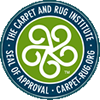
Request A Free Estimate Today
Our Mission: To provide our clients the most outstanding service experience ever!
Carpet Selection Guide
| Quick Contact |
 |
Types of Carpet |
 Textured Plush |
 Saxony |
 Berber Loop-Pile |
 Berber Cut-Pile |
 Cut/Loop |
 Commercial Loop |
Types of Carpet |
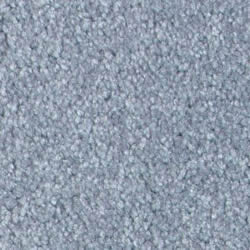   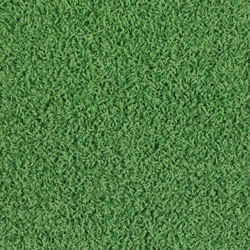 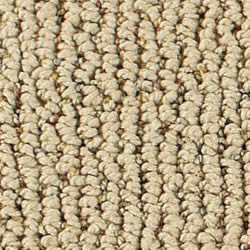 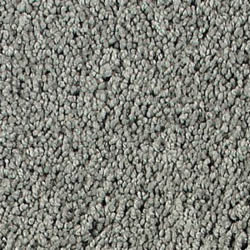  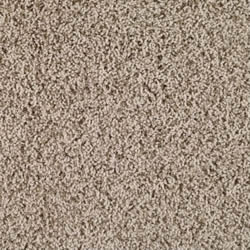 |
The following information will help you get familiar with carpet terms and definitions so you can make an educated decision on selecting your next carpet.
PILE DESIGNS
There are several terms relating to the manufacturing process which need to be understood
before we actually discuss carpet pile designs.
- Gauge
- Pitch
- Density
- Face Weight
The distance between the needles on a tufting machine . the gauge is expressed in fractions of an inch, and refers to the number of needles which are positioned across the width of the tufting machine.
The distance between the stitches made by the needles (the distance which the backing material travels before the needle inserts the next tuft). Pitch is expressed in terms of the number of tufts per inch.
The closeness of the pile yarns. Density refers to the closeness of the pile yarns, and is an indication of both gauge and pitch. It is measured by the number of ounces per yard. Generally, the higher the density, the better the quality of the carpet.
The weight, expressed in the number of ounces per yard of fiber extending above the primary backing.
The rest of this information will be based on Cut-Pile designs (59% of the current market), Loop-Pile designs (28% of the market), and Cut and Loop-Pile combination designs (13% of the market).
CUT-PILE DESIGNS
- Saxony Pile
- Plush or Velvet
- Shag Pile
- Splush (short-shag or mini-shag)
- Frieze(free-say)
- Grass-pile
A saxony configuration will generally have a pile height of about three quarters of an inch. The main distinction of a saxony will be in the fact that the pile is made up of twisted, heat-set yarns with sufficient density to cause them to stand upright to foot traffic. Ninety percent of the expensive carpets made today are of the saxony pile.
The plush design is dense enough to remain upright to normal traffic. The major distinguishing trait of a plush is that there is little or no twist set in the face yarns which comprise the pile. This introduces a smooth, uniform texture on the face of the plush or velvet carpet. This "velvet-plush" carpet can be sensitive to high temperatures in the cleaning solution, causing fiber distortion. Temperature settings should be turned down from the maximum settings.
This design has almost disappeared from the current market, though since a number of shag carpets remain from the early seventies, it warrants some discussion. Generally, a shag carpet contains a pile height greater than one inch, but that pile height must be coupled with so little density as to create a casual, random-lay effect so that the sides of the yarns are exposed to the foot traffic rather than the tips which are exposed on most other carpet configurations.
This carpet is halfway between the shag and the plush. The pile height is usually about three quarters of an inch, with a density which is insufficient to cause the yarn ends to stand upright to foot traffic. Although the density is greater than that of a shag, the same "random lay" effect is still apparent.
This design is composed of very tightly twisted yarns that give a rough, nubby appearance.
Grass-pile carpets are usually made of slit-film olefin which actually simulates grass. It comes in a variety of colors.
LOOP-PILE DESIGNS
- Level Loop-Pile
- Multi-Level Loop-Pile
This design consists of uniformly level tufts in an uncut or loop-pile configuration. Commercial quality carpet is often of the level-loop configuration with high density but low pile height.
This configuration is also known as "high-low" pile carpet. It is formed by increasing tension on the yarn during tufting, which forms patterns with high and low loops.
CUT AND LOOP PILE DESIGNS
- Sculptured Saxony
- Sculptured Shag
- Level Cut-loop
Sculptured saxony consists of higher, cut-pile yarns in the saxony tradition which are contrasted in texture by lower, loop-pile yarns which remain uncut.
This design is similar to the sculptured Saxony though is composed of higher, less dense cut-pile yarns in a shag configuration, contrasted by lower loops which remain uncut.
This technique is used to create a wide range of patterns using cut and loop piles of the same height.
FIBER TYPES Pros & Cons
There are many different types of fiber used to make carpet. In this section we are going to give you the PROS & CONS of the four most popular fibers, Nylon, Polyester, Olefin, and Wool.
NYLON
PROS- Good Elasticity – Nylon will stretch up to 33% of its length and still regain its original shape. This is very important in heavy traffic areas where furniture may be dragged across the carpet.
- Very Abrasion Resistant – It even surpasses wool. Many manufacturers offer wear guaranties.
- Static Resistant – Not its ancestry, but today’s fibers do very well.
- Heat Sets Well – When properly heat set, nylon retains its crimp, twist, and dye extremely well.
- Good resiliency – Nylon can be crushed for long periods and still regain its original shape.
- Non-Absorbent – Nylon dries quickly since it will absorb less than 8% of its weight in H20.
- Mildew Resistant – Nylon provides no food source, but mildew can grow on it if another food source is available. Notice the damage that can be done under an over watered potted plant.
- Nylon responds very well to most professional cleaning methods and treatments.
- Nylon is almost always acid dyed. It is rarely solution dyed, so it can have problems with bleaching, fading, urine reactions, etc.
POLYESTER
Polyester’s popularity seems to go up and down like a roller coaster. Because it’s relatively inexpensive to produce, manufacturers are regularly reintroducing this fiber to the carpet industry. Although it has some excellent qualities, and is a great fiber for clothing, it does have some limiting factors when used in carpet.PROS
- Since polyester does not have dye sites, it is usually dyed with a disperse dye or solution dye method which makes it very resistant to bleaching, fading and soil dye reactions.
- Stain Resistant – This applies only to water based stains.
CONS
- Polyester is difficult to dye and usually must be solution dyed which limits the variety.
- It is not resistant to oily stains, and in fact an oily spill or spot left without proper cleanup can oxidize and even chemically bond with and become part of the fiber. You need to know that some of these spots just won’t come out.
- Crimp Loss – Early polyester was a mess. A new polyester carpet was fuller, fluffier and more luxurious than anything on the market. Six-month-old polyester was an owner’s nightmare. Due to loss of twist and crimp, long strait fibers were left in the traffic areas, which caused matting and tangling and destroyed the original look of the carpet. Definite improvements have been made by heat setting and using finer yarns, but crimp loss can still be a problem. This is a characteristic of polyester, not a defect.
OLEFIN
Olefin is a very versatile carpet fiber. It is used in carpet backings (called polypropylene), face yarns and even astroturf. Olefin has become almost synonymous with one of its trade names “Herculon” a trademark owned by Hercules Corporation, a major manufacturer of olefin.PROS
- Olefin is very moisture resistant. It will absorb only one tenth of 1% of its weight in water. This leads to some pros and some cons.
- Very difficult to stain.
- Great for outdoor applications (stadium or pool)
- Chemical Resistant – Most chemicals and bleaches won’t damage it at all
- Solution dyeing makes it resistant to fading.
- Lightweight – It is the only common carpet fiber that will float on water. ( Except celluloid)
- Strong – It wears well except for resiliency factor (see cons).
- It has good cleanability and stain release. (Except oil/petroleum-based stains – see cons)
CONS
- Olefin is not a resilient fiber. When crushed it does not regain its original shape easily. Traffic areas tend to lie down, showing “apparent soiling”. Furniture marks can be permanent reminders to the owner of where his furniture used to be.
- It is a very heat sensitive fiber. Its melting point is around 300 degrees but damage can occur at lower temperatures.
- Olefin can be damaged by Friction – Even dragging a heavy piece of furniture across an olefin carpet can cause permanent marks from the heat generated by friction.
- Like polyester, extended exposure to oil-based soils may become permanent.
- Olefin is very difficult to dye due to its low absorbency rate. It is almost always solution dyed.
- Quite often, Olefin is in a glue-down situation, which creates a potential to brown from soil wicking from the base of the yarns due to incomplete soil removal. Over wetting and/or slow drying increases the likelihood.
WOOL
Wool comes from the fleece of sheep or lambs. This is one of the oldest fibers used by man, dating back over two thousand years. It is still one of the finest face yarns available for carpet. Wool is chemically made up of standard organic elements including sulfur, which accounts for the wool smell when it is damp.PROS
- Wool has excellent soil hiding capabilities. Wool will not exhibit or show soil as much as other fibers. The reason for this is that wool is an opaque fiber (as opposed to synthetics which are transparent) and wool doesn’t refract and reflect light like synthetics. The naturally dull appearance provided by the scales of the epidermis makes soil much less apparent to the human eye.
- Wool is very strong, elastic and resilient. Wool face yarn in a well-constructed carpet will stand up to the heaviest traffic and still look beautiful. (Notice the carpet in most casinos and finer hotel lobbies and hallways).
- Natural crimp makes wool and excellent insulator.
- Good Absorbency – This means that wool reacts well to a number of dye types and techniques. Keep in mind, this means easy staining also.
- Soil Release – Wool responds very well to cleaning as moisture makes the fiber swell and release dirt.
- Wool is naturally flame retardant.
CONS
- Wool is a very expensive material. This arises mainly from the processing cost, the cleaning, and the preparation, etc., rather than the actual cost of the raw material.
- Fiber Distortion – Wool is very prone to distortion by excess agitations such as jet streaks and wand marks. This is particularly pronounced when it happens under heated conditions.
- Stains Easily – Due to its absorbency and ease of dyeing, wool is also easily stained by wine, Kool-Aid and other acid dyestuffs. Remember that absorbency is the same quality that makes wool so desirable as far as dye acceptance and obtaining the beautiful rich colors that you often find in wool carpets and oriental rugs.
- Chemical Sensitivity – Wool is sensitive to alkaline chemicals above a pH of 9.5 after prolonged exposure. This exposure will tend to make wool brittle and discolor somewhat. This problem is sometimes referred to as “felting”. Wool is also very sensitive to chlorine bleach, such as Clorox, which is normally found in homes and grocery stores. Chlorine bleach will completely dissolve wool within a matter of minutes. The New Zealand Wool Bureau recommends water-based cleaning solutions with a pH not lower than 5.5 and not higher than 8 pH.
- Staple Yarn – Fuzzing can be a source of problems because wool only comes as a staple yarn and excess agitation can cause that fuzzing effect.




